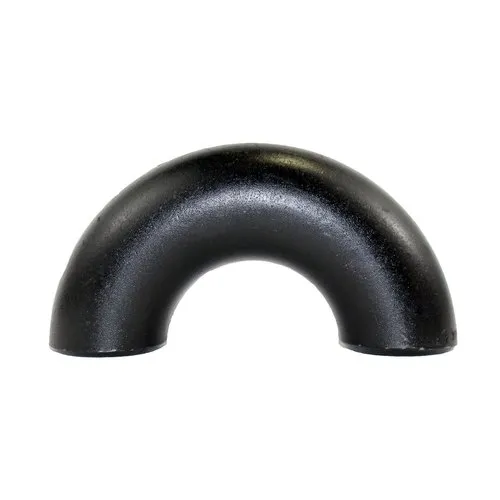-
Cangzhou Yulong Steel Co., Ltd.
-
Phone:
+86 13303177267 -
Email:
admin@ylsteelfittings.com
- English
- Arabic
- Italian
- Spanish
- Portuguese
- German
- kazakh
- Persian
- Greek
- French
- Russian
- Polish
- Thai
- Indonesian
- Vietnamese
- Zulu
- Korean
- Uzbek
- Hindi
- Serbian
- Malay
- Ukrainian
- Gujarati
- Haitian Creole
- hausa
- hawaiian
- Hebrew
- Miao
- Hungarian
- Icelandic
- igbo
- irish
- Japanese
- Javanese
- Kannada
- Khmer
- Rwandese
- Afrikaans
- Albanian
- Amharic
- Armenian
- Azerbaijani
- Basque
- Belarusian
- Bengali
- Bosnian
- Bulgarian
- Catalan
- Cebuano
- China
- China (Taiwan)
- Corsican
- Croatian
- Czech
- Danish
- Esperanto
- Estonian
- Finnish
- Frisian
- Galician
- Georgian
- Kurdish
- Kyrgyz
- Lao
- Latin
- Latvian
- Lithuanian
- Luxembourgish
- Macedonian
- Malgashi
- Malayalam
- Maltese
- Maori
- Marathi
- Mongolian
- Myanmar
- Nepali
- Norwegian
- Norwegian
- Occitan
- Pashto
- Dutch
- Punjabi
- Romanian
- Samoan
- Scottish Gaelic
- Sesotho
- Shona
- Sindhi
- Sinhala
- Slovak
- Slovenian
- Somali
- Sundanese
- Swahili
- Swedish
- Tagalog
- Tajik
- Tamil
- Tatar
- Telugu
- Turkish
- Turkmen
- Urdu
- Uighur
- Welsh
- Bantu
- Yiddish
- Yoruba

Nov . 01, 2024 08:33 Back to list
PN100 Flange Specifications and Compatibility with ANSI Standards
Understanding PN100% Flange to ANSI A Comprehensive Overview
In the realm of piping and industrial applications, the interchangeability of flanges is of paramount importance. One of the key types of flanges that frequently comes up in discussions among engineers and procurement specialists is the PN100% flange. To fully appreciate its significance, it is essential to examine its connection to the ANSI (American National Standards Institute) standards.
What is a PN100% Flange?
The term PN stands for Pressure Nominal, which is a metric indication of the pressure-handling capability of flanges, fittings, and valves within a piping system. A PN100 flange can handle a maximum pressure of 100 bar at a temperature of 20 degrees Celsius, making it highly suitable for high-pressure applications in various industries such as oil and gas, chemical processing, and power generation.
ANSI Standards Explained
ANSI standards are widely recognized in North America and provide a reliable method for assessing the dimensions, tolerances, and performance of flanges. The ANSI/ASME B16.5 standard covers pipe flanges, specifying various types, sizes, pressure ratings, and materials. ANSI flanges are categorized into different classes based on their pressure ratings, with common classifications including Class 150, Class 300, and Class 600.
pn100 flange to ansi

Comparing PN100% Flanges with ANSI Flanges
When considering the interchangeability between PN100% flanges and ANSI flanges, it is crucial to understand the differences in pressure ratings and specifications. While a PN100% flange is designed based on metric measurements, ANSI flanges are built to imperial specifications. This discrepancy necessitates careful consideration when designing piping systems that incorporate both types of flanges.
Conversion Between PN and ANSI
To effectively integrate PN100% flanges with ANSI systems, engineers often employ conversion tables or pressure rating charts. For instance, a PN100 flange can be roughly equated to an ANSI Class 600 flange, although other factors such as material strength and service conditions should also be considered. Furthermore, the bolt hole patterns, flange dimensions, and gasket types must be compatible to ensure a proper seal and avoid leaks.
Conclusion
In summary, the PN100% flange and ANSI standards provide fundamental frameworks within which engineers can design efficient and safe piping systems. Understanding the differences and conversion methods between these two types of flanges is essential for ensuring the integrity and reliability of industrial applications. With proper design considerations and compatibility checks, PN100% flanges can be effectively utilized within ANSI-based systems, facilitating seamless operations across various sectors.
Latest news
-
ANSI 150P SS304 SO FLANGE
NewsFeb.14,2025
-
ASTM A333GR6 STEEL PIPE
NewsJan.20,2025
-
ANSI B16.5 WELDING NECK FLANGE
NewsJan.15,2026
-
ANSI B16.5 SLIP-ON FLANGE
NewsApr.19,2024
-
SABS 1123 FLANGE
NewsJan.15,2025
-
DIN86044 PLATE FLANGE
NewsApr.19,2024
-
DIN2527 BLIND FLANGE
NewsApr.12,2024
-
JIS B2311 Butt-Welding Fittings LR/SR 45°/90° /180°Seamless/Weld
NewsApr.23,2024











